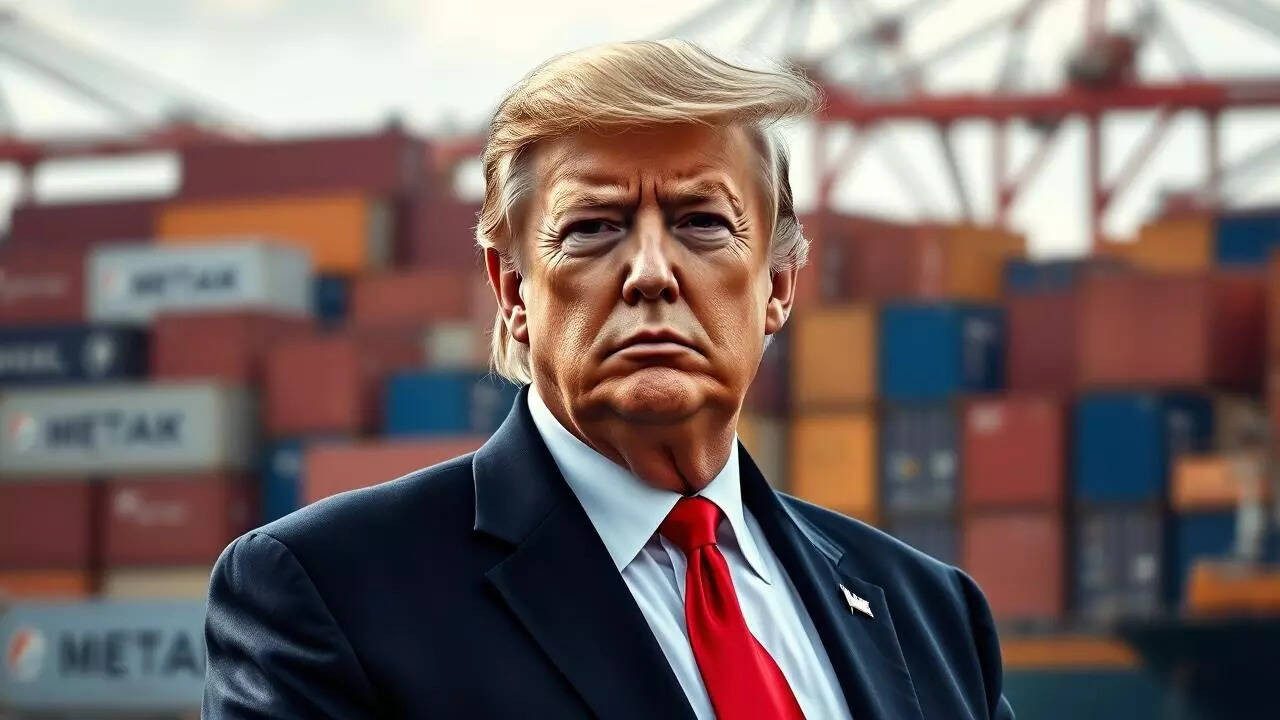Donald Trump issued tariff letters to several countries, including the Philippines, Brunei, Moldova, Algeria, Libya, and Iraq, warning of reciprocal duties starting August 1, 2025. These actions follow Trump’s earlier announcement of tariffs for fourteen other nations.
A Tariff Tsunami? Trump’s Trade Winds Shift Again
Donald Trump’s post-presidency isn’t exactly quiet. He’s back in the headlines, and this time, it’s not through rallies or social media pronouncements, but rather, a series of letters unleashing the potential for significant tariff hikes on a range of countries. Remember the trade wars of the Trump era? It feels like we might be gearing up for another round.
These aren’t casual suggestions; they’re formal notifications indicating that several nations could soon face tariffs as high as 30% on goods entering the U.S. The list is surprisingly diverse, encompassing economies like Iraq, the Philippines, Ecuador, Cambodia, Uzbekistan, and Pakistan. The rationale, as it often was during Trump’s presidency, revolves around the idea of protecting American industries and leveling the playing field.
The specific mechanism being employed is Section 232 of the Trade Expansion Act of 1962, a tool that allows the President to impose tariffs on imports deemed a threat to national security. It’s a broad power, and one that Trump utilized extensively during his time in office, often drawing criticism from both allies and adversaries.
<img src="image-of-shipping-containers.jpg" alt="Shipping containers lined up at a port, symbolizing global trade and the potential impact of Trump's new tariffs.”/>
Why These Countries? What’s the Connection?
That’s the million-dollar question. On the surface, the connection between these countries and a direct threat to U.S. national security isn’t immediately obvious. While some of these nations have complex geopolitical relationships, framing their exports as a direct security risk requires some interpretative leaps.
The letters suggest that the Trump team believes these countries are benefiting unfairly from existing trade arrangements, potentially undermining American manufacturing and jobs. It echoes the “America First” philosophy that defined his economic policies. Whether this argument holds water remains a contentious issue, debated fiercely by economists and trade experts.
Tariffs as a Bargaining Chip?
It’s difficult to ignore the possibility that these tariff threats are a strategic maneuver. Think of it as a high-stakes negotiation tactic. By brandishing the threat of increased duties, the Trump camp could be aiming to pressure these countries into making concessions on other trade-related matters. Perhaps they want to see changes in intellectual property protection, currency manipulation, or market access for American companies. The ambiguity surrounding the specific reasons for these potential tariffs only strengthens their leverage in such negotiations.
The Ripple Effect: Beyond the Targeted Nations
The impact of these potential tariffs extends far beyond the borders of the directly affected countries. Global supply chains are intricate webs, and disrupting one part can have cascading consequences. American businesses that rely on imports from these nations could face higher costs, potentially leading to price increases for consumers. Similarly, exporters in these countries could see a decline in demand, impacting their economies and potentially leading to job losses.
Furthermore, this move could embolden other countries to retaliate with their own tariffs, sparking a trade war that would ultimately harm everyone involved. The global economy is already facing numerous challenges, and adding another layer of trade uncertainty could further dampen growth prospects.
The Road Ahead: What to Expect
The next steps involve a period of review and consultation. The targeted countries will likely have the opportunity to present their case and argue against the imposition of tariffs. Intense lobbying efforts from businesses and industry groups are also expected.
Ultimately, the decision rests with the Trump administration. They will weigh the arguments presented, assess the potential economic and political consequences, and decide whether to proceed with the tariffs. Given Trump’s past actions, the outcome is far from certain. The trade landscape remains in flux.
It’s clear that the specter of higher tariffs is back on the table, potentially reshaping global trade flows and impacting economies around the world. Whether this is a strategic negotiation tactic or a genuine attempt to reshape trade relations, the coming weeks and months will be crucial in determining the long-term consequences. The world is watching closely to see how this unfolds, and businesses everywhere are bracing for potential disruptions. This situation highlights the complex interplay between trade, politics, and national security, reminding us that economic policy is rarely straightforward. For more on navigating global market changes, explore our resources on international business strategy.





